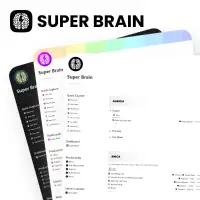How to Build a High Performing Team – The Complete Guide
Build a High Performing Team: Building a high-performing team is a critical goal for any business leader. It’s not just about bringing together a group of talented individuals but creating a synergistic unit that achieves outstanding results. As a business leader, your ability to build and nurture such teams can be a game-changer for your organization. In this comprehensive guide, we’ll explore strategies, insights, and actionable tips to help you build and lead high-performing teams that drive success.
What distinguishes high-performing teams from their counterparts? It’s not merely a matter of assembling a skilled group of individuals; it involves cultivating specific traits, behaviors, and best practices.
In this piece, we’ll delve into the essence of high-performing teams, outline their defining characteristics, explore the process of building such teams, and discuss how to elevate your efforts using performance management technology. Let’s get started!

Understanding the Dynamics of High-Performing Teams
Before we delve into the strategies, it’s essential to understand what makes a team high-performing and why it’s worth the effort. High-performing teams consistently achieve exceptional results. But what sets them apart? These teams are characterized by strong collaboration, clear goals, effective communication, accountability, and a commitment to continuous improvement. By fostering these traits within your team, you can unlock numerous benefits, including increased productivity, enhanced innovation, and improved employee satisfaction. Understanding the dynamics of high-performing teams is the first step on your journey to becoming a successful team leader.
Before we delve into the strategies, it’s essential to understand what makes a team high-performing and why it’s worth the effort.
What Makes a Team High-Performing?
High-performing teams consistently achieve exceptional results. But what sets them apart?
A high-performing team isn’t your ordinary group; it’s an exceptional assembly of individuals who bring their unique skills, diverse viewpoints, specialized knowledge, and complementary abilities to tackle ambitious objectives. These teams are unwavering in their pursuit of exceptional outcomes, and their success is rooted in trust, cooperation, and a shared sense of purpose. By harnessing their combined talents and aligning their efforts, high-performing teams consistently exceed expectations and establish new benchmarks of excellence.
However, creating high-performing teams doesn’t happen by chance. With the right approach to performance management, you can empower them to collaborate, innovate, and produce work of the highest caliber.
1. Strong Collaboration: Members actively collaborate, share ideas, and complement each other’s strengths.
2. Clear Goals: A shared vision and well-defined goals keep the team aligned.
Effective Communication: Open, honest, and transparent communication is key.
3. Accountability: Team members take responsibility for their tasks and deliver on commitments.
4. Continuous Improvement: High-performing teams strive for excellence and are open to learning and adapting.
The Benefits of High-Performing Teams
Why should you invest in building high-performing teams? The benefits are numerous:
Increased Productivity: High-performing teams are more productive, leading to faster task completion.
Enhanced Innovation: Collaborative environments foster creativity and innovation.
Improved Employee Satisfaction: Team members are more engaged, leading to higher job satisfaction.
Better Problem-Solving: Teams can tackle complex challenges effectively.
Greater Customer Satisfaction: High-performing teams are more likely to deliver exceptional service.

What sets high performing teams apart from the rest?
What sets high performing teams apart from the rest? They don’t settle for mediocrity; instead, they consistently achieve extraordinary results by embracing five key practices. These practices allow them to outshine their peers and drive remarkable success.
1. High performing teams are all about innovation and adaptability.
Change doesn’t intimidate them; it excites them. They actively seek new ideas, foster innovation, and swiftly adapt to evolving circumstances. Embracing flexibility and change keeps them agile, resilient, and ready to seize emerging opportunities. They understand that the road to success isn’t always measured by rigid KPIs but by the organizational impact they create.
2. Organizational silos can’t contain high performing teams.
They’re notorious for breaking down these barriers to encourage cross-functional collaboration across departments, teams, and sometimes even countries. Their environment promotes the free sharing of knowledge, leveraging each other’s strengths, and working synergistically toward shared goals, strengthening their relationships.
3. Recognition and achievement are pivotal to high performing teams.
They use data to proactively and reactively celebrate both small and significant milestones, customizing recognition to individual employees. This practice creates a culture of appreciation and motivation that encourages everyone to strive for excellence. In this supportive atmosphere, giving and receiving constructive feedback becomes natural, as mistakes are viewed as opportunities for improvement.
4. High performing teams understand the value of streamlined processes and technology.
They know that their success relies on efficient tools for collaboration, data-driven reporting, analytics, and the automation of repetitive tasks. These tools free up time for strategic growth.
5. Mutual accountability is a cornerstone of high performing teams.
They don’t throw team members under the bus; instead, they embrace collective accountability by holding each other and themselves responsible for the team’s performance. Commitment to these high standards is easier due to their collaborative culture, goal-setting practices, and access to performance-enhancing tools.

Building a high-performing team
Strategies for Building High-Performing Teams
Creating a high-performing team doesn’t happen by chance. It requires a deliberate approach that encompasses several key strategies. Starting with the right people, setting clear goals, fostering open and effective communication, and promoting accountability are just a few of the crucial strategies that form the foundation of your journey. Additionally, investing in training and development, managing conflict constructively, and maintaining motivation are essential aspects of this journey. These strategies provide you with the tools to build a cohesive, productive, and harmonious team that consistently delivers exceptional results.
Now that we understand what high-performing teams look like and why they matter, let’s explore the strategies that can help you build such teams.
1. Start with the Right People
Define Roles Clearly: Ensure each team member knows their role, responsibilities, and goals.
Hire Complementary Talents: Consider diverse skills and personalities that complement each other.
Assess Cultural Fit: Ensure alignment with the organization’s values and culture.
2. Create a Vision and Set Clear Goals
Establish a Compelling Vision: Your team should know what they’re working towards.
Define Specific Goals: Make your objectives SMART (Specific, Measurable, Achievable, Relevant, and Time-bound).
Encourage Ownership: Let team members participate in setting their own goals.
3. Foster Open and Effective Communication
Encourage Sharing: Create an environment where ideas and opinions are freely shared.
Active Listening: Foster a culture where team members actively listen to one another.
Use Multiple Channels: Employ a variety of communication tools to suit different preferences and situations.
4. Develop Trust and Psychological Safety
Lead by Example: Demonstrate trustworthiness and openness.
Create a Safe Space: Allow team members to express themselves without fear of criticism.
Celebrate Vulnerability: Encourage openness about mistakes and challenges.
5. Promote Accountability
Set Expectations: Clearly define what’s expected of each team member.
Measure and Evaluate: Use KPIs and regular reviews to track progress and success.
Celebrate Achievements: Recognize and reward accomplishments.
6. Encourage Collaboration
Promote Team-Building Activities: Organize events and exercises that strengthen the team’s bond.
Share Success Stories: Highlight cases where collaborative efforts led to success.
Cross-Functional Teams: Encourage collaboration among members from different departments or areas of expertise.
7. Invest in Training and Development
Continuous Learning: Support team members in developing their skills and knowledge.
Coaching and Mentorship: Provide guidance and coaching for personal and professional growth.
Cross-Training: Offer opportunities for team members to learn about each other’s roles.
8. Manage Conflict Constructively
Address Conflicts Early: Don’t let issues fester; address them promptly.
Establish Conflict Resolution Guidelines: Create a framework for addressing conflicts respectfully.
Mediation: In some cases, consider bringing in a neutral third party to mediate.

Challenges in Building High-Performing Teams
While building high-performing teams is a worthy endeavor, it’s not without its challenges. Understanding and navigating these challenges is a critical part of the process. From managing diverse personalities to handling conflicts and maintaining motivation, there are hurdles to overcome. Dealing with change and managing resistance are additional challenges you’ll encounter. This section equips you with the knowledge to anticipate these obstacles and develop strategies to address them effectively.
While the goal is to create high-performing teams, it’s essential to recognize the challenges you may face along the way.
Managing Diverse Personalities
Personality Clashes: Differences in communication styles and working preferences can lead to conflicts.
Respecting Individual Needs: Accommodate diverse needs and preferences within the team.
Handling Conflict
Avoiding Conflict: Unresolved conflicts can lead to resentment and hamper performance.
Addressing Conflict Effectively: Equip your team with conflict resolution skills.
Maintaining Motivation
Burnout: Overworking can lead to fatigue and decreased motivation.
Recognizing and Addressing Burnout: Look out for signs of burnout and take steps to prevent it.
Dealing with Change
Resistance: Team members may resist changes in processes or objectives.
Change Management: Implement strategies to help your team adapt to change.

Leading High-Performing Teams
As a business leader, your role extends beyond building a high-performing team; it involves leading them effectively. Leading by example, inspiring and motivating, providing clear direction, and offering coaching and development are key aspects of leadership. By setting the right example, inspiring your team to greatness, and guiding them towards success, you become the driving force behind your team’s high-performance. This section provides you with the leadership skills and insights needed to excel in this pivotal role.
As a business leader, your role is not just about building the team but also about leading them effectively.
Leading by Example
Integrity and Ethics: Demonstrate strong ethical standards and integrity.
Open Communication: Lead the way in transparent and effective communication.
Accountability: Hold yourself accountable for your actions and decisions.
Inspiring and Motivating
Sharing the Vision: Communicate your vision and inspire others to work towards it.
Reward and Recognition: Acknowledge and reward hard work and achievements.
Encourage Personal Growth: Support your team’s personal and professional development.
Providing Clear Direction
Setting Goals: Define and communicate clear, achievable goals.
Prioritizing Tasks: Help the team focus on what matters most.
Decision-Making: Make informed decisions and involve your team in the process when possible.
Coaching and Development
Skills Development: Encourage the team to acquire new skills and knowledge.
Mentorship: Offer guidance and mentorship for career growth.
Feedback and Performance Reviews: Provide regular feedback and evaluation.

Measuring and Improving Team Performance
Building a high-performing team isn’t a one-time achievement; it’s an ongoing commitment. To maintain and enhance your team’s performance, you must measure and improve continually. Key Performance Indicators (KPIs), team feedback, and continuous learning are three essential components of this effort. By identifying, measuring, and analyzing KPIs, you can track your team’s progress. Gathering feedback through surveys and open forums provides insights for improvement, while a culture of continuous learning ensures your team stays competitive and adapts to changing environments.
To build and maintain a high-performing team, it’s crucial to continuously assess and enhance their performance.
Key Performance Indicators (KPIs)
Identify and Measure: Define KPIs that align with your team’s objectives and measure them consistently.
Monitoring Tools: Use performance monitoring tools and software to track KPIs.
Analyzing Data: Regularly analyze performance data and seek patterns and trends.
Team Feedback
Regular Surveys: Collect feedback from team members through anonymous surveys.
Open Forums: Provide opportunities for open discussions and feedback sessions.
Continuous Learning
Post-Project Reviews: Analyze the results of completed projects and identify lessons learned.
Skill Development: Encourage ongoing training and development for team members.
Adapting Strategies: Be prepared to adjust your team-building strategies based on results and feedback.
Wrapping Up
Building and leading high-performing teams is a challenge but a rewarding one. It’s about creating a supportive and productive environment where individuals collaborate, learn, and grow. Your team’s success contributes directly to your organization‘s success, and as a business leader, your role in fostering this growth is pivotal.
Remember, it’s an ongoing journey. As you adapt to new challenges, emerging technologies, and shifting dynamics, the strategies and principles outlined in this guide will continue to serve as your roadmap to building and leading high-performing teams. By investing in your team’s success, you’re investing in the success of your organization as a whole.
Building a high-performing team is not just a goal; it’s a journey. Start yours today.
If you’re eager to learn more about leading high-performing teams and want to explore additional strategies, check out our in-depth guide on team leadership. It’s filled with actionable insights, case studies, and expert advice to help you nurture a culture of excellence within your team. Don’t miss out on this opportunity to become a master of team leadership. Your high-performing team awaits.
Download our comprehensive guide and elevate your team leadership skills to new heights. Your journey to success starts here.

















